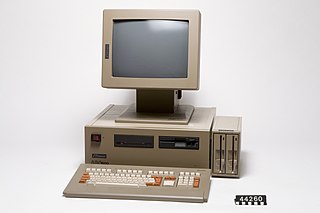 W
WThe ABC 1600 was a personal computer from Luxor that was introduced in 1985. It was built around the Motorola 68008 processor, had 1 megabyte of memory and used the operating system ABCenix, a Unix-like system developed from DNIX.
 W
WLisa is a desktop computer developed by Apple, released on January 19, 1983. It is one of the first personal computers to present a graphical user interface (GUI) in a machine aimed at individual business users. Development of the Lisa began in 1978, and it underwent many changes during the development period before shipping at US$9,995 with a five-megabyte hard drive. The Lisa was challenged by a relatively high price, insufficient software library, unreliable Apple FileWare ("Twiggy") floppy disks, and the immediate release of the cheaper and faster Macintosh — yielding lifelong sales of only 10,000 units in two years.
 W
WThe Applix 1616 was a kit computer with a Motorola 68000 CPU, produced by a small company called Applix in Sydney, Australia, from 1986 to the early 1990s. It ran a custom multitasking multiuser operating system that was resident in ROM. A version of Minix was also ported to the 1616, as was the MGR Window System. Andrew Morton, designer of the 1616 and one of the founders of Applix, later became the maintainer of the 2.6 version of the Linux kernel.
 W
WThe AT&T UNIX PC is a Unix desktop computer originally developed by Convergent Technologies, and marketed by AT&T in the mid- to late-1980s. The system was codenamed "Safari 4" and is also known as the PC 7300, and often dubbed the "3B1". Despite the latter name, the system had little in common with AT&T's line of 3B series computers. The system was tailored for use as a productivity tool in office environments and as an electronic communication center.
 W
WThe Atari Jaguar is a home video game console developed by Atari Corporation and released in North America in November 1993. Part of the fifth generation of video game consoles, it competed with the 16-bit Sega Genesis and Super NES and the 32-bit 3DO Interactive Multiplayer which launched the same year. Despite its two custom 32-bit processors – Tom and Jerry – in addition to a Motorola 68000, Atari marketed it as the world's first 64-bit game system, emphasizing its 64-bit bus. The Jaguar launched with Cybermorph as the pack-in game.
 W
WThe Atari Panther is a cancelled 32-bit video game console from Atari Corporation that was going to be the successor to the Atari 7800 and the Atari XEGS. It was developed by the same ex-Sinclair team, Flare Technology, who were previously responsible for two cancelled console projects: the Flare One and the Konix Multisystem. The Panther was planned to be a combination of the Atari ST and the Atari Transputer Workstation Blossom video hardware.
 W
WBesta (Беста) — a Soviet Unix-based graphics workstation. Their production started in 1988. More than 1,000 Besta workstations were produced.
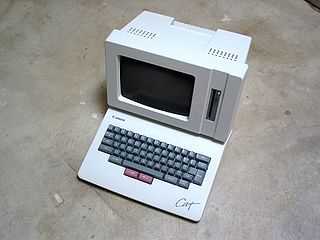 W
WCanon Cat is a task-dedicated desktop computer released by Canon Inc. in 1987 at the price of U.S. $1,495. On the surface, it was not unlike dedicated word processors popular in the late 1970s to early 1980s, but it was far more powerful, and incorporated many unique ideas for data manipulation.
 W
WThe Compact Disc-Interactive is a digital optical disc data storage format that was mostly developed and marketed by Dutch company Philips. It was created as an extension of CDDA and CD-ROM and specified in the Green Book, co-developed by Philips and Sony, to combine audio, text and graphics. The two companies initially expected to impact the education/training, point of sale, and home entertainment industries, but CD-i eventually became best known for its video games.
 W
WThe CDTV is a home multimedia entertainment and video game console – convertible into a full-fledged personal computer by the addition of optional peripherals – developed by Commodore International and launched in April 1991.
 W
WThe HP Integral PC was a portable UNIX workstation computer system produced by Hewlett-Packard, launched in 1985 at a price of £5450. It was based on the Motorola 68000 microprocessor and ran the HP-UX 1.0 operating system.
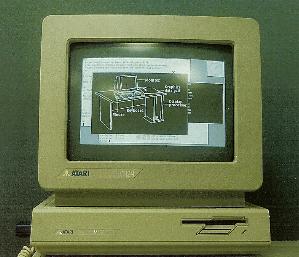 W
WIdris is a discontinued multi-tasking, Unix-like, multi-user, real-time operating system released by Whitesmiths, of Westford, Massachusetts. The product was commercially available from 1979 through 1988.
 W
WThe MC68451 was a Motorola Memory Management Unit (MMU), which was primarily used in conjunction with the Motorola MC68010 microprocessor.
 W
WThe Motorola 68851 is an external Memory Management Unit (MMU) which is designed to provide paged memory support for the 68020 using that processor's coprocessor interface. In theory it can be used with other processors such as the 68010 by simulating the coprocessor interface in software.
 W
WThe Motorola 68881 and Motorola 68882 are floating-point coprocessor (FPU) devices that were used in some computer systems in conjunction with the 68020 or 68030 microprocessors. The Motorola 68881 was introduced in 1984. The addition of one of these devices added substantial cost to a computer, but added a floating-point unit that could rapidly perform floating point mathematical calculations. In the mid 1980s, this feature was useful mostly for scientific and mathematical software.
 W
WMotorola Single Board Computers is Motorola's production line of computer boards for embedded systems. There are three different lines : mvme68k, mvmeppc and mvme88k. The first version of the board appeared in 1988. Motorola still makes those boards and the last one is MVME3100.
 W
WThe Neo Geo CD is the second home video game console of SNK Corporation's Neo Geo family, released in September 9, 1994, four years after its cartridge-based equivalent. This is the same platform, converted to the cheaper CD format retailing at $49 to $79 per title, compared to the $300 cartridges. The system was originally priced at US$399, or £399 in the UK. The unit's 1× CD-ROM drive is slow, with very long loading times. The system can also play Audio CDs. All three versions of the system have no region-lock. The Neo Geo CD was launched bundled with a control pad instead of a joystick like the AES version. However, the original AES joystick can be used with all three Neo Geo CD models.
 W
WThe NeXTcube is a high-end workstation computer developed, manufactured, and sold by NeXT from 1990 until 1993. It superseded the original NeXT Computer workstation and is housed in a similar cube-shaped magnesium enclosure. The workstation runs the NeXTSTEP operating system and was launched with a US$10,000 list price.
 W
WThe NeXTcube Turbo was a high-end workstation computer developed, manufactured and sold by NeXT. It superseded the earlier NeXTcube workstation and was housed in the same cube-shaped magnesium enclosure. The workstation ran the NeXTSTEP operating system.
 W
WNeXTstation is a high-end workstation computer developed, manufactured and sold by NeXT from 1990 until 1993. It runs the NeXTSTEP operating system. The NeXTstation was released as a more affordable alternative to the NeXTcube at about US$4,995 or about half the price. Several models were produced, including the NeXTstation (25 MHz), NeXTstation Turbo (33 MHz), NeXTstation Color (25 MHz) and NeXTstation Turbo Color (33 MHz). In total, NeXT sold about 50,000 computers, making the NeXTstation a rarity today.
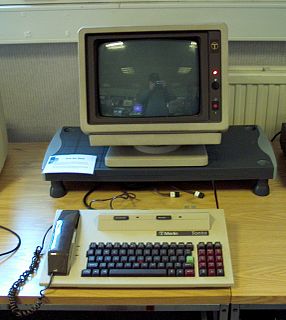 W
WThe One Per Desk, or OPD, was an innovative hybrid personal computer/telecommunications terminal based on the hardware of the Sinclair QL. The One Per Desk was built by International Computers Limited (ICL) and launched in the UK in 1984. It was the result of a collaborative project between ICL, Sinclair Research and British Telecom begun in 1981, originally intended to incorporate Sinclair's flat-screen CRT technology.
 W
WThe Outbound laptop is an Apple Macintosh-compatible laptop computer. It is powered by a 15-MHz Motorola 68000 processor. Later versions increased the clock speed to 20 MHz.
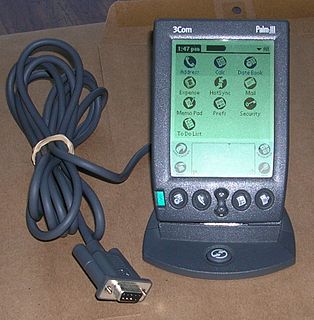 W
WThe Palm III is a personal digital assistant that was made by the Palm Computing division of 3Com. It went on sale in 1998 as a replacement for the PalmPilot handheld. It was the first Palm handheld to support infrared file transfer and a Flash ROM-capable operating system. At release, the Palm III was priced at US$400.
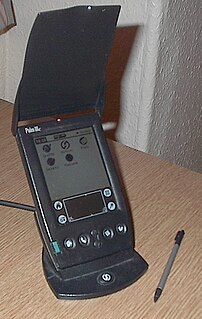 W
WThe Palm IIIc was the first colour PDA made by Palm, Inc., released in February 2000 for $449USD. It ran Palm OS 3.5, the first Palm OS version to have native colour support and supported paletted 8-bit colour modes. Using the Palm OS Upgrade Install CD, the Palm IIIc could be updated to Palm OS 4.1. The machine has a TFT LCD that is bright indoors. The Palm IIIc features the classic III-series connector, 8MB of RAM and a 20MHz DragonBall EZI CPU. The unit also has a lithium ion rechargeable battery and a slightly modified version of the original Palm III chassis.
 W
WThe Palm IIIe is a PDA from Palm Computing released in 1999 briefly after the more expensive and more advanced Palm IIIx.
 W
WThe Palm IIIx is a PDA from Palm Computing released in 1999, briefly before the scaled down Palm IIIe was introduced into the marketplace.
 W
WThe Palm IIIxe is a discontinued Palm personal digital assistant that was designed and manufactured by Palm, Inc. It cost US$249 when new.
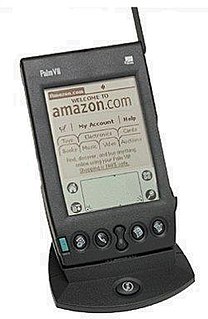 W
WThe Palm VII was a personal digital assistant made by the Palm Computing division of 3Com. The device featured an antenna used for wireless data communication, a first for a Palm device. Connectivity was provided through the Mobitex network, under the now defunct Palm.net service. Web Clipping applications, also known as Palm Query Applications (PQAs) made use of the network to request and post web data. The devices also provided PQA developers with the user's position, in the form of a zipcode, making the Palm VII the first web-enabled Location-Based Services mobile platform. The cost of service was $14.95 per month, and allowed a limited number of web pages to be viewed.
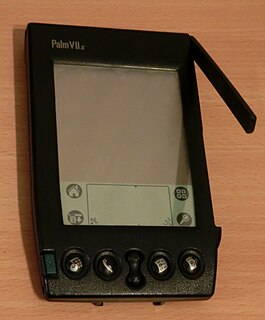 W
WThe Palm VIIx was a personal digital assistant made by Palm, Inc. The device featured an antenna used for wireless data communication. Connectivity was provided through the Mobitex network under the now defunct Palm.net service. Web Clipping applications used the network to process data. The cost of service was $14.95 per month and allowed a limited number of web pages to be viewed.
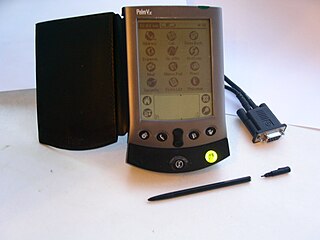 W
WThe Palm Vx was a personal digital assistant made by the Palm Computing division of 3Com. It benefited from the sleek design and low weight of its predecessor, the Palm V, while increasing the available storage to 8 MB. At 114 grams, it was one of the lightest models ever offered by Palm. Retail price at launch was US$399.
 W
WThe PalmPilot Personal and PalmPilot Professional are the second generation of Palm PDA devices produced by Palm Inc. These devices were launched on March 10, 1997.
 W
WThe PalmPilot Professional is a personal digital assistant. While the PalmPilot was released March 10, 1997 as an updated version of the Pilot 5000, there was delayed general availability of the Professional model in the marketplace.
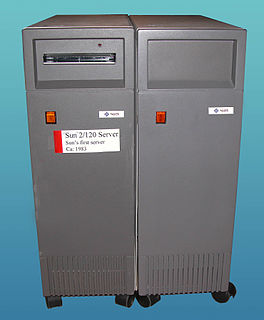 W
WThe Sun-2 series of UNIX workstations and servers was launched by Sun Microsystems in November 1983. As the name suggests, the Sun-2 represented the second generation of Sun systems, superseding the original Sun-1 series. The Sun-2 series used a 10 MHz Motorola 68010 microprocessor with a proprietary Sun-2 Memory Management Unit (MMU), which enabled it to be the first Sun architecture to run a full virtual memory UNIX implementation, SunOS 1.0, based on 4.1BSD. Early Sun-2 models were based on the Intel Multibus architecture, with later models using VMEbus, which continued to be used in the successor Sun-3 and Sun-4 families.
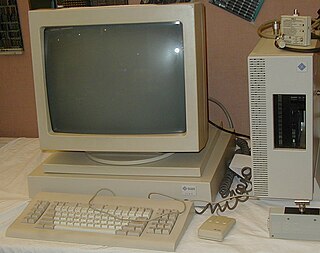 W
WSun-3 is a series of UNIX computer workstations and servers produced by Sun Microsystems, launched on September 9, 1985. The Sun-3 series are VMEbus-based systems similar to some of the earlier Sun-2 series, but using the Motorola 68020 microprocessor, in combination with the Motorola 68881 floating-point co-processor and a proprietary Sun MMU. Sun-3 systems were supported in SunOS versions 3.0 to 4.1.1_U1 and also have current support in NetBSD and Linux.
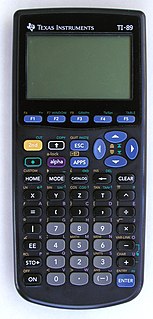 W
WThe TI-89 and the TI-89 Titanium are graphing calculators developed by Texas Instruments (TI). They are differentiated from most other TI graphing calculators by their computer algebra system, which allows symbolic manipulation of algebraic expressions—equations can be solved in terms of variables, whereas the TI-83/84 series can only give a numeric result.
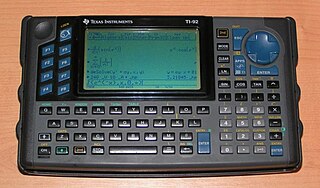 W
WThe TI-92 series of graphing calculators are a line of calculators produced by Texas Instruments. They include: the TI-92 (1995), the TI-92 Plus, and the Voyage 200 (2002). The design of these relatively large calculators includes a QWERTY keyboard. Because of this keyboard, it was given the status of a "computer" rather than "calculator" by American testing facilities and cannot be used on tests such as the SAT or AP Exams while the similar TI-89 can be.
 W
WVMEbus is a computer bus standard, originally developed for the Motorola 68000 line of CPUs, but later widely used for many applications and standardized by the IEC as ANSI/IEEE 1014-1987. It is physically based on Eurocard sizes, mechanicals and connectors, but uses its own signalling system, which Eurocard does not define. It was first developed in 1981 and continues to see widespread use today.